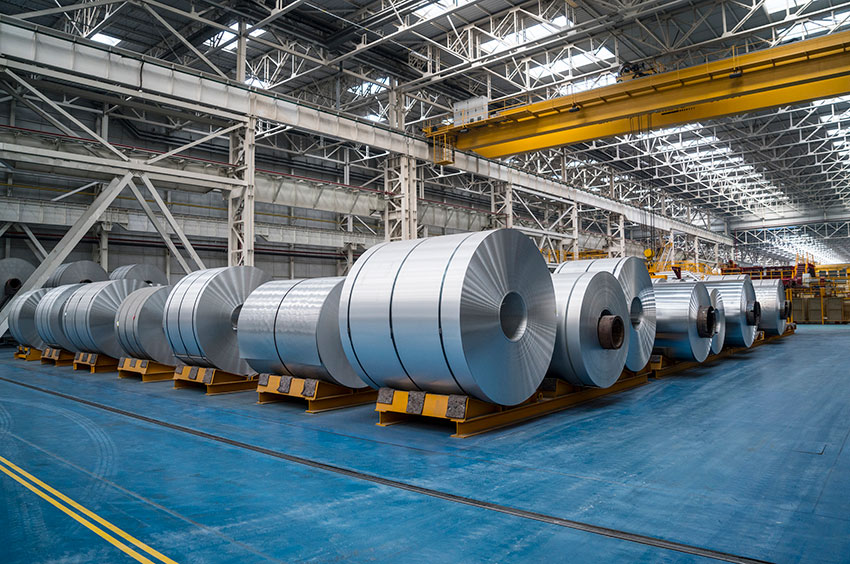Specifying Aluminum High-Performance Windows and Doors
v4 MR Credit: Building Product Disclosure and Optimization—EPDs
The intent of this credit is to encourage the use of products and materials for which life- cycle information is available and that have environmentally, economically, and socially preferable life-cycle impacts, and to reward project teams for selecting products from manufacturers who have verified improved environmental life-cycle impacts. We will look at achieving the first option:
Option 1. Environmental Product Declaration (1 point) Use at least 20 different permanently installed products sourced from at least five different manufacturers that meet one of the disclosure criteria below.
- Product-specific declaration
- Products with a publicly available, critically reviewed life-cycle assessment conforming to ISO 14044 that have at least a cradle-to-gate scope are valued as one-quarter of a product for the purposes of credit achievement calculation.
- Environmental Product Declarations that conform to ISO 14025, 14040, 14044, and EN 15804 or ISO 21930 and have at least a cradle to gate scope
- Industry-wide (generic) EPD: Products with third-party certification (Type III), including external verification, in which the manufacturer is explicitly recognized as a participant by the program operator, are valued as one half of a product for purposes of credit achievement calculation.
- Product-specific Type III EPD: Products with third-party certification (Type III), including external verification in which the manufacturer is explicitly recognized as the participant by the program operator, are valued as one whole product for purposes of credit achievement calculation.
- USGBC approved program: Products that comply with other USGBC approved environmental product declaration frameworks. The credit also outlines another option that uses LCAs. The industry has conducted both LCAs and EPDs. There are a few changes to this credit in the newest LEED version, v4.1.
Further Credit Categories
In LEED v4.1, a product following the product-specific declaration criteria is valued as one whole instead of one-quarter of a product; a product with an industry-wide (generic) EPD is valued as one whole instead of one-half; and one with a product-specific Type III EPD is valued as 1.5 products instead of one. There is also another EPD type:
- Product-specific Type III EPD: Internally Reviewed
- Products with an internally critically reviewed LCA in accordance with ISO 14071.
- Products with product specific internal EPDs that conform to ISO 14025, and EN 15804 or ISO 21930 and have at least a cradle to gate scope are valued as one whole product for the purposes of credit achievement calculation. There are a number of other prerequisites and credit categories in v4 where aluminum windows can contribute.
- Energy and Atmosphere Prerequisite Minimum Energy Performance
- Energy and Atmosphere Credit Optimize Energy Performance: a possible 20 points
- Materials and Resources Prerequisite Construction and Demolition Waste Management Planning
- Materials and Resources Credit Construction and Demolition Waste Management
- Materials and Resources Credit Building Life Cycle Impact Reduction
- Credits for acoustic control, indoor air quality, daylighting, and quality views
Many of the issues identified by LEED for credits are recognized by other building standards as well. The International WELL Building Institute (IWBI) is a public benefit corporation whose mission is to improve human health and well-being in buildings and communities across the world through its WELL Building Standard (WELL).
This standard also recognizes the importance of enhanced daylight access and requires projects to design spaces to integrate daylight into indoor environments in order that daylight could be used for visual tasks along with electric lighting and to provide windows and doors that connect individuals to the outdoors.
Conclusion
Aluminum has been in use for many decades in many ways and in that time has proven to be an extremely versatile and reliable building material. Since its early production in 1887 and today, the means by which its raw materials are extracted from the earth, the methodologies by which they are combined, and the manner in which aluminum products are produced has improved significantly in relation to environmental protection, emissions, the amount of recycled material used, and the reduction of energy needed.
The aluminum fenestration industry has concurrently improved the technology used to fabricate window and door frame extrusions. Current extrusion advancements have improved their resistance to heat loss or gain to the point where aluminum is now a top performer for window and door frames that must meet the increasingly stringent energy usage requirements for today’s buildings.
The positive attributes of aluminum, which include strength, stiffness, flexibility, durability, corrosion resistance, and nontoxicity, combined with its ability to be recycled and reused indefinitely without a loss of any of these attributes makes aluminum one of the most sustainable and beneficial building materials in current use. Aluminum can be finished and colored in a number of ways and thus provides designers with an extremely wide choice of design options, along with the knowledge they are using a safe, affordable, healthy, and sustainable material.
Erika Fredrickson, is a writer/editor focusing on technology, environment, and history. She frequently contributes to continuing education courses and publications through Confluence Communications.




